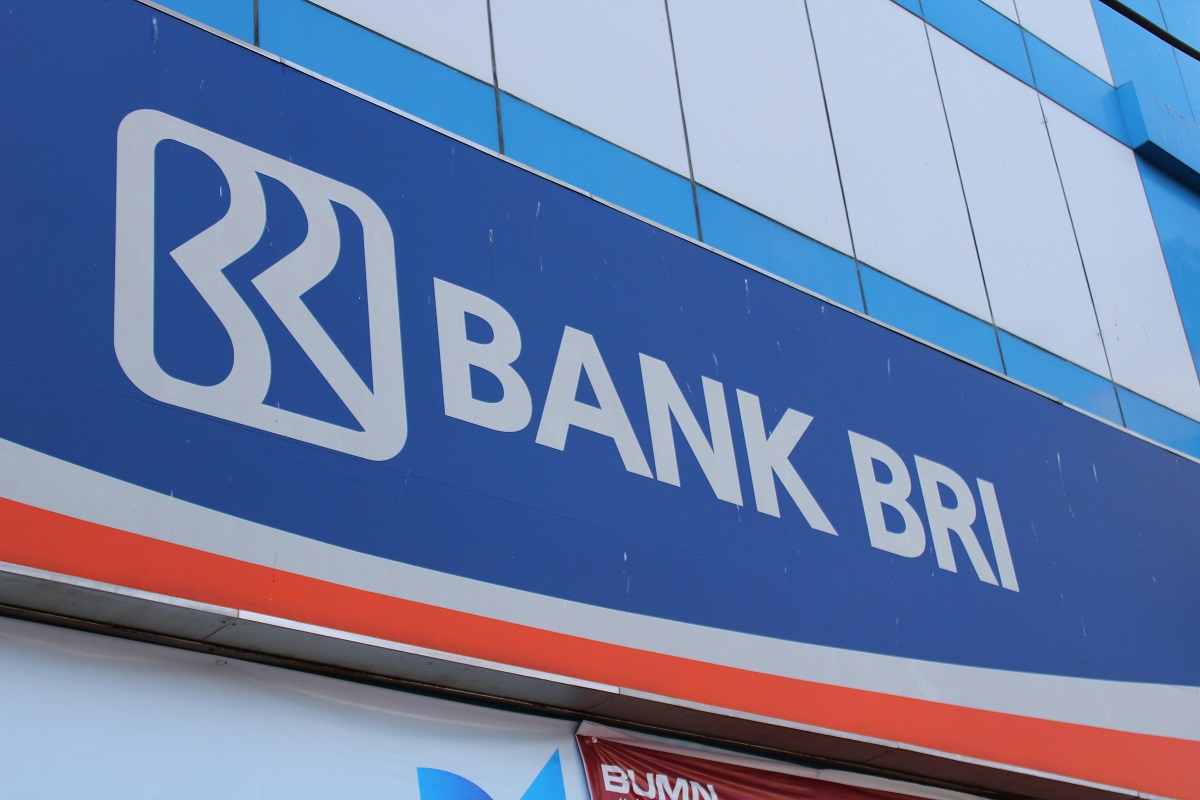BRI Sky Age: Unlocking Global Connectivity's Future
The following article delves into the transformative potential of the Belt and Road Initiative, exploring its multifaceted impact on global connectivity, economic development, and digital landscapes. It draws insights from various perspectives, including challenges in digital integration and the broader vision of international cooperation.
The concept of a "BRI Sky Age" represents a future shaped by China's ambitious Belt and Road Initiative (BRI), envisioning an era of unprecedented global connectivity, economic integration, and digital advancement. This grand strategy, initially focused on physical infrastructure, has rapidly expanded to encompass a vast network of digital, trade, and financial links, promising to redefine international relations and foster shared prosperity. It's a vision where geographical barriers diminish, and nations are brought closer through robust infrastructure and seamless digital pathways, aiming for a world where economic development is accelerated and poverty significantly reduced across dozens of developing countries.
This evolving "Sky Age" is not merely about building roads and railways; it's about fostering a comprehensive ecosystem where goods, services, capital, and information flow more freely. As the world becomes increasingly interconnected, the challenges and opportunities in digital integration, as exemplified by everyday experiences like using WhatsApp Web or integrating business applications, highlight the critical need for resilient and accessible digital infrastructure. The BRI's digital component, often dubbed the "Digital Silk Road," plays a pivotal role in shaping this future, addressing connectivity gaps, and facilitating the digital transformation necessary for sustainable growth in participating nations.
- New Restaurants In Hawaii
- Los Hondurenos Menu
- The Coop Bar And Grill Menu
- Josh Saunders Bjj Record
- Martin Family Orchards
Table of Contents
- Introduction to the BRI Sky Age
- The Foundations of the BRI: A Vision for Connectivity
- Digital Silk Road: Paving the Way for Seamless Interaction
- Economic Transformation and Poverty Reduction
- The Role of Policy and Multilateral Cooperation
- Addressing the Complexities of the BRI Sky Age
- The World Bank and the Vision for a Livable Planet
- Conclusion: Shaping the Future of Global Connectivity
Introduction to the BRI Sky Age
The "BRI Sky Age" encapsulates the ambitious scope of China's Belt and Road Initiative, a monumental undertaking that seeks to create a vast network of trade routes and infrastructure projects spanning Asia, Africa, and Europe. More than just a collection of physical assets, this initiative aims to foster a new era of global cooperation and shared development. The "Sky Age" metaphor suggests reaching new heights in connectivity, not only through physical links like roads, railways, and seaports but also through advanced digital networks and streamlined economic processes. It envisions a future where nations, particularly developing ones, are empowered to participate more fully in the global economy, driven by enhanced infrastructure and digital capabilities. The promise of the BRI Sky Age is profound: accelerated economic development and a significant reduction in poverty for dozens of countries, provided the initiative is accompanied by deep policy reforms and robust governance.
The Foundations of the BRI: A Vision for Connectivity
At its core, the Belt and Road Initiative is a comprehensive strategy to build roads, railways, seaports, and other trade infrastructure across the Eurasian continent and beyond. This massive undertaking is designed to facilitate trade, investment, and people-to-people exchanges, effectively recreating and modernizing the ancient Silk Road. The vision extends beyond mere construction; it aims to create economic corridors that foster regional integration and unlock the development potential of landlocked and less-developed regions. By improving connectivity, the BRI seeks to reduce logistical costs, enhance market access, and stimulate economic activity, laying the groundwork for what we conceptualize as the "BRI Sky Age." This foundational infrastructure is critical for bridging development gaps and ensuring that more countries can participate meaningfully in the global supply chain, thereby contributing to the collective goal of poverty alleviation and sustainable growth.
Digital Silk Road: Paving the Way for Seamless Interaction
Integral to the "BRI Sky Age" is the "Digital Silk Road," a crucial component that focuses on digital infrastructure and connectivity. This includes the development of fiber optic networks, 5G technology, smart cities, and e-commerce platforms. The goal is to create a seamless digital environment that complements the physical infrastructure, enabling faster data flow, more efficient communication, and broader access to digital services. In an increasingly digital world, robust digital infrastructure is as vital as physical roads for economic development. It facilitates online trade, improves governance, enhances education, and supports innovation, all of which are critical for nations to thrive in the 21st century. The Digital Silk Road aims to ensure that participating countries are not left behind in the digital revolution, thereby strengthening the overall fabric of the BRI Sky Age.
- Stephanie Young Pottery
- Naod Welday Utah
- Hermosa Beach Open 2025
- Tarek Souidan Ford Motor Company
- Sulzbacher Village Photos
Navigating Digital Challenges: Lessons from Everyday Connectivity
The aspiration for seamless digital connectivity within the "BRI Sky Age" is underscored by the everyday challenges users face with current digital platforms. Consider the common frustrations highlighted in user queries: "How to use WhatsApp Web on PC without QR code or camera? My phone broke and won't turn on, and I can't get the code." Or the issue of "only one conversation not syncing on WhatsApp Web," or the inability to "view images sent or received in a conversation on WhatsApp Web using Google Chrome." These seemingly minor issues point to significant underlying challenges in digital infrastructure, interoperability, and user experience. They illustrate that even with existing technology, connectivity can be fragile and dependent on multiple factors. For the BRI Sky Age to truly deliver on its promise of widespread digital integration, these kinds of connectivity and synchronization issues must be systematically addressed through robust, resilient, and user-friendly digital networks and platforms. The very real-world problems faced by individuals trying to access essential communication tools like WhatsApp emphasize the necessity of building digital infrastructure that is not only widespread but also reliable and accessible, even under challenging circumstances.
The Quest for Seamless Digital Integration
Further illustrating the complexities and ongoing efforts in digital integration, we see examples like "Microsoft Edge forum soon available exclusively on Microsoft Q&A" to provide a "more streamlined and efficient" experience, or attempts to "send a message from Excel to WhatsApp with list data" via hyperlink functions. These initiatives, while not directly part of BRI, reflect a global drive towards greater digital efficiency and integration across different platforms and applications. They highlight the continuous evolution of digital ecosystems and the demand for solutions that simplify complex tasks and enhance user productivity. In the context of the "BRI Sky Age," such efforts are highly relevant. The success of the Digital Silk Road will depend not only on laying down physical cables but also on fostering an environment where digital services are interoperable, secure, and user-friendly. This means developing standards, encouraging innovation, and perhaps even addressing issues like "WhatsApp currently doesn't have an app for Xbox console," which points to the need for pervasive and platform-agnostic digital solutions. The ambition of the BRI Sky Age is to create a digital landscape where connectivity issues, like slow loading messages on WhatsApp Web due to connectivity errors, become a rarity, ensuring that the digital infrastructure truly serves as an enabler for economic growth and social development.
Economic Transformation and Poverty Reduction
A core promise of the "BRI Sky Age" is its potential to accelerate economic development and significantly reduce poverty in participating countries. By investing in critical infrastructure, the BRI aims to unlock economic potential by improving access to markets, reducing transportation costs, and attracting foreign investment. This infrastructure development can stimulate local economies, create jobs, and foster industrial growth. For instance, enhanced trade routes can boost exports, while improved energy infrastructure can support industrialization. The World Bank Group, with its 189 member countries, is a unique global partnership fighting poverty worldwide through sustainable solutions, sharing a similar overarching goal to the BRI. The synergy between such initiatives, when properly aligned with national development strategies, can lead to substantial improvements in living standards and economic resilience. The success of the BRI Sky Age in achieving these economic transformations hinges on careful planning, transparent implementation, and the capacity of recipient countries to leverage these investments effectively for long-term sustainable growth.
The Role of Policy and Multilateral Cooperation
The success of the "BRI Sky Age" in achieving its transformative goals is deeply intertwined with robust policy reforms and enhanced multilateral cooperation. The "Data Kalimat" explicitly states that the BRI "must be accompanied by deep policy" for it to speed up economic development and reduce poverty. This highlights the understanding that infrastructure alone is insufficient; it must be complemented by sound governance, transparent regulations, and effective economic policies within recipient countries. Furthermore, the emphasis on "Multilateral development banks deepen collaboration to deliver as a system" indicates a growing recognition of the need for coordinated efforts among international financial institutions. This collaborative approach ensures that large-scale initiatives like the BRI are integrated into broader global development frameworks, promoting shared standards and maximizing positive outcomes. The BRI Sky Age necessitates a global partnership where various stakeholders, including governments, private sector entities, and international organizations, work in concert to address complex development challenges.
Collaborative Frameworks for Sustainable Development
The integration of multilateral development banks (MDBs) into the BRI framework signifies a move towards more comprehensive and sustainable development practices. The joint statements by leaders of MDBs to "deliver as a system" underscore a commitment to coordinated financing, technical assistance, and policy dialogue. This collaboration can help ensure that BRI projects adhere to international best practices in areas such as environmental protection, social safeguards, and debt sustainability. For the "BRI Sky Age" to be truly impactful and equitable, it needs to leverage the expertise and financial capacity of these institutions. Their involvement can provide crucial oversight and help mitigate potential risks, ensuring that the benefits of infrastructure development are widely distributed and contribute to long-term stability. This cooperative model is essential for building trust and fostering a global environment conducive to sustainable development, aligning the BRI's ambitions with broader international development goals.
Case Studies in Reform: Gabon and Laos
The importance of internal policy reforms for the success of initiatives like the BRI is exemplified by specific country contexts. For instance, "The Gabon Economic Update 2024 presents fiscal policy reforms to optimize fiscal revenues while allowing Gabon to advance the green growth potential of its wood industry." Similarly, the phrase "With the right reforms undertaken by the Lao" indicates the critical role of domestic policy adjustments in leveraging external investments. These examples highlight that while the BRI provides the external impetus and investment, the internal capacity and willingness of nations to undertake necessary reforms are paramount. For the "BRI Sky Age" to truly flourish, countries must implement policies that promote good governance, ensure transparent resource management, and foster an environment conducive to sustainable economic activities. This includes fiscal discipline, environmental stewardship, and equitable distribution of benefits, ensuring that the infrastructure investments translate into tangible improvements in the lives of their citizens and contribute to a more sustainable global economy.
Addressing the Complexities of the BRI Sky Age
While the vision of a "BRI Sky Age" is compelling, its realization is not without complexities. The massive scale of the initiative, the diverse geopolitical landscapes it traverses, and the varying economic capacities of participating nations present significant challenges. Concerns regarding debt sustainability, environmental impact, and labor standards have been raised by various stakeholders. For the BRI Sky Age to truly deliver on its promise, these issues must be addressed with transparency, accountability, and a commitment to international norms. This requires continuous dialogue, adaptive strategies, and a willingness to learn from past experiences. The goal is to ensure that the BRI serves as a catalyst for inclusive and sustainable development, rather than exacerbating existing vulnerabilities. Navigating these complexities effectively will determine whether the BRI Sky Age truly ushers in an era of shared prosperity or creates new imbalances.
The World Bank and the Vision for a Livable Planet
The vision of the "BRI Sky Age" resonates strongly with the broader goals of international development institutions. The World Bank, as one of the international development financial institutions, articulates its vision statement as: "Our dream is a world free of poverty on a livable planet." This powerful statement encapsulates the ultimate aspiration shared by many global initiatives, including the BRI. It emphasizes not only economic upliftment but also environmental sustainability, recognizing that development must not come at the cost of planetary health. For the "BRI Sky Age" to align with this universal dream, its projects must be designed and implemented with a strong emphasis on environmental protection, climate resilience, and sustainable resource management. The collaboration between the BRI and institutions like the World Bank, fostering shared knowledge and best practices, is crucial to ensuring that the new era of connectivity contributes to a world that is not only prosperous but also environmentally sound and equitable for all its inhabitants.
Conclusion: Shaping the Future of Global Connectivity
The "BRI Sky Age" represents a transformative vision for global connectivity, aiming to reshape trade, foster economic development, and significantly reduce poverty through extensive infrastructure and digital networks. From the grand ambition of building roads and railways across continents to the intricate challenges of ensuring seamless digital interactions, the initiative underscores the multifaceted nature of modern global integration. Its success hinges not only on the scale of investment but also on critical factors like deep policy reforms, robust multilateral cooperation, and a genuine commitment to sustainable and inclusive growth. As we navigate the complexities of this ambitious endeavor, the lessons learned from everyday digital frustrations and the collaborative spirit of international development bodies like the World Bank become invaluable. The journey towards the BRI Sky Age is ongoing, promising a future where a truly interconnected world strives towards a shared dream of prosperity on a livable planet. What are your thoughts on how global connectivity initiatives like the BRI can best address both economic development and digital challenges? Share your insights in the comments below!
- Estampa Floral Farm
- Montehiedra Office Center
- Chappell Roan Night San Diego
- Sulzbacher Village Photos
- Unique Return Gift Ideas

Logo BRI (Bank Rakyat Indonesia) - Logodesain

BRI Jadi Perusahaan Publik Terbesar di Indonesia oleh Forbes Global 2000

Download Logo Bank Bri - Perumperindo.co.id